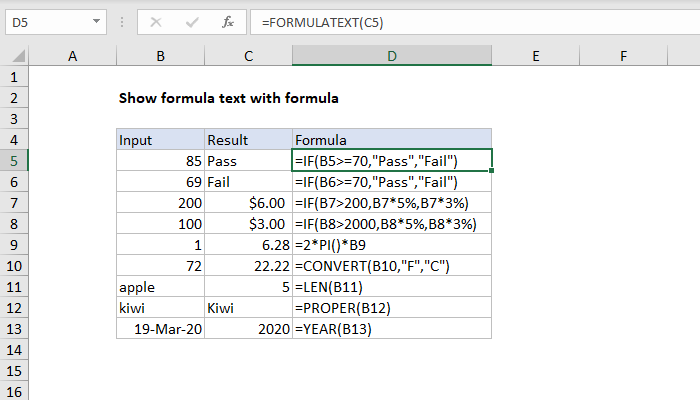

Here is a list of operators you can use:īelow is a simple example where students marks are checked. When using Excel IF function with numbers, you can use a variety of operators to check a condition. Example 1: Using Excel IF function to Check a Simple Numeric Condition Here are five practical examples of using the IF function in Excel. This would return 0 whenever the checked condition is met. For example, in the example below, the formula is =IF(A1>20,”Approve”), where the value_if_true is not specified (only a comma is used to then specify the value_if_false value).If you omit the TRUE argument ( value_if_true), and specify only the value_if_false argument, the function would return a 0 when the condition is TRUE.This would return 0 whenever the checked condition is not met. For example, in the example below, the formula is =IF(A1>20,”Approve”,), where the value_if_false is not specified, however, the value_if_true argument is still followed by a comma.If you omit the FALSE argument ( value_if_false), i.e., there is only a comma after the value_if_true argument, the function would return a 0 when the condition is FALSE.If any of the argument is an array, each element of the array is evaluated.A maximum of 64 nested IF conditions can be tested in the formula.Important Notes About using IF Function in Excel – (Optional) This is the value that is returned when the logical_test evaluates to FALSE.– (Optional) This is the value that is returned when the logical_test evaluates to TRUE.This can either be a cell reference, a result of some other formula, or can be manually entered. It could be a logical expression that can evaluate to TRUE or FALSE. logical_test – this is the condition that you want to test.It returns whatever value you specify for the TRUE or FALSE condition. If it’s TRUE, the function returns a specified value/reference, and if not then it returns another specified value/reference. If you copy and paste from a cell or range that has formatting rules, these rules will be applied when you paste the copied data.IF function in Excel is best suited for situations where you check whether a condition is TRUE or FALSE.The first rule found to be true will define the format of the cell or range. Rules are evaluated in the order listed.

To remove a rule, point to the rule and click Remove.For example, a text rule containing "a~?c" would format cells with "a?c" but not "abc" or "a~?c."


For example, a text rule containing "a*c" would format cells with "abc," "ac," and "abbc" but not "ab" or "ca."


 0 kommentar(er)
0 kommentar(er)
